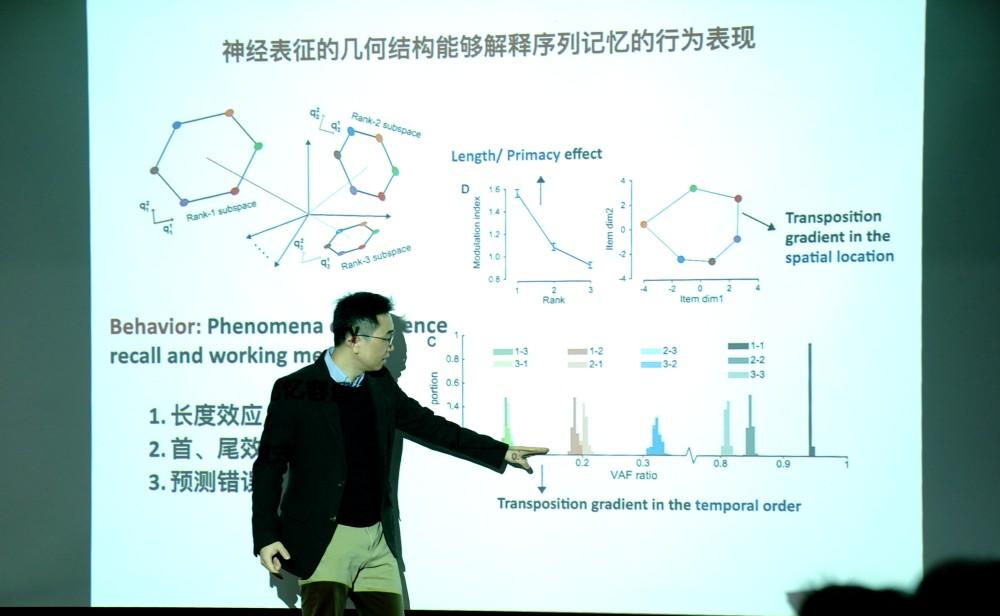The cognitive activities of the human brain, such as language communication and episodic memory, are all related to time series information. How does the brain memorize timing information? A new study by mainland scientists overturns the key assumptions of classical time-series memory models, revealing for the first time the neural mechanisms of brain time-series memory.
The research was done by the Center for Excellence in Brain Science and Intelligent Technology (Institute of Neuroscience) of the Chinese Academy of Sciences, the Wang Liping Research Group of the Key Laboratory of Primate Neurobiology of the Chinese Academy of Sciences, the Min Bin Associate Researcher of the Shanghai Brain Science and Brain-like Research Center, and the Tang Shiming Research Group of the School of Life Sciences of Peking University. On February 11, the international authoritative academic journal Nature published a relevant research paper.

On February 11, Wang Liping, a researcher at the Center for Excellence in Brain Science and Intelligent Technology of the Chinese Academy of Sciences, introduced the scientific research results. Photo by Xinhua News Agency reporter Zhang Jiansong
According to Wang Liping, a researcher at the Center for Excellence in Brain Science and Intelligent Technology of the Chinese Academy of Sciences, the key assumption of the classical time series memory model is mainly the coding properties of single neurons in the brain. The latest research suggests that the brain's spatiotemporal integration of sequence information occurs at the population level rather than at the level of individual neurons. The state space of high-dimensional neurons can be decomposed into multiple two-dimensional subspaces, and using the "dimensionality reduction principle", sequence information coding reduces the complexity of neural computation and facilitates the time sequence of distinguishing information.
This scientific conclusion comes from the ingenious experiment of the scientific team with macaque monkeys as the research object. Macaques are primates that are evolutionarily close to humans, and their cognitive abilities, brain structure and function are very close to those of humans, and are the best model for scientists to study the complex and advanced cognitive functions of the human brain.
To explore the problem of timing memory encoding, the researchers trained macaques to memorize spatial sequences consisting of multiple location points. In the experimental task, three different points flashed on the screen in front of the macaque in turn, and the macaque needed to report these points after a few seconds in the order in which they had been presented. During the memory retention period a few seconds before reporting, information from spatial sequences is temporarily stored in the brain in the form of working memory.
In the process, the researchers imaged the lateral prefrontal cortex, a brain area where macaque monkeys stored working memories, and performed two-photon calcium signaling. Calcium signaling can reflect the pulse firing activity of neurons, i.e. the state of the macaque brain neuronal population as they perform their tasks.
By analyzing the high-dimensional data obtained by calcium imaging, the researchers found that in the high-dimensional vector space, the two-dimensional subspace corresponding to the information of each sequence can be found through "dimensionality reduction". Within each subspace, the spatial positions of the different points correspond to each other in line with the circular geometry of the real visual stimulus. Moreover, there is almost no overlap in the subspaces corresponding to different sequences, that is, each information in the sequence has a separate storage space.
Macaque spatial sequence memory task. (Courtesy of the interviewee)
Further studies also showed that the lower the order of the subspace, the smaller the radius of the ring structure, the less attention resources are allocated to the corresponding. This finding also corresponds to the behavioral manifestations of sequential memory, for example, if we remember more content in our daily lives, the more information we have later, the more likely it is to be wrong.
"This study is the first time at the population neuron level that the principles of calculation and coding of sequence working memory are explained, suggesting that our study of sequence memory coding in the brain should pay more attention to the nature of population neurons in the future." Wang Liping said.
Industry experts believe that the latest study by Chinese scientists has discovered the "dimensionality reduction principle" in the brain's time series memory, providing new ideas for understanding the problem of "how neural networks perform symbolic representations". As the philosopher Schopenhauer said, "Simplicity is always a common feature of truth and genius." "This original research, revealing the dialectical unity of complexity and simplicity in timing representation of the human brain, will have a profound impact on brain-inspired AI research." (Reporter Zhang Jiansong)